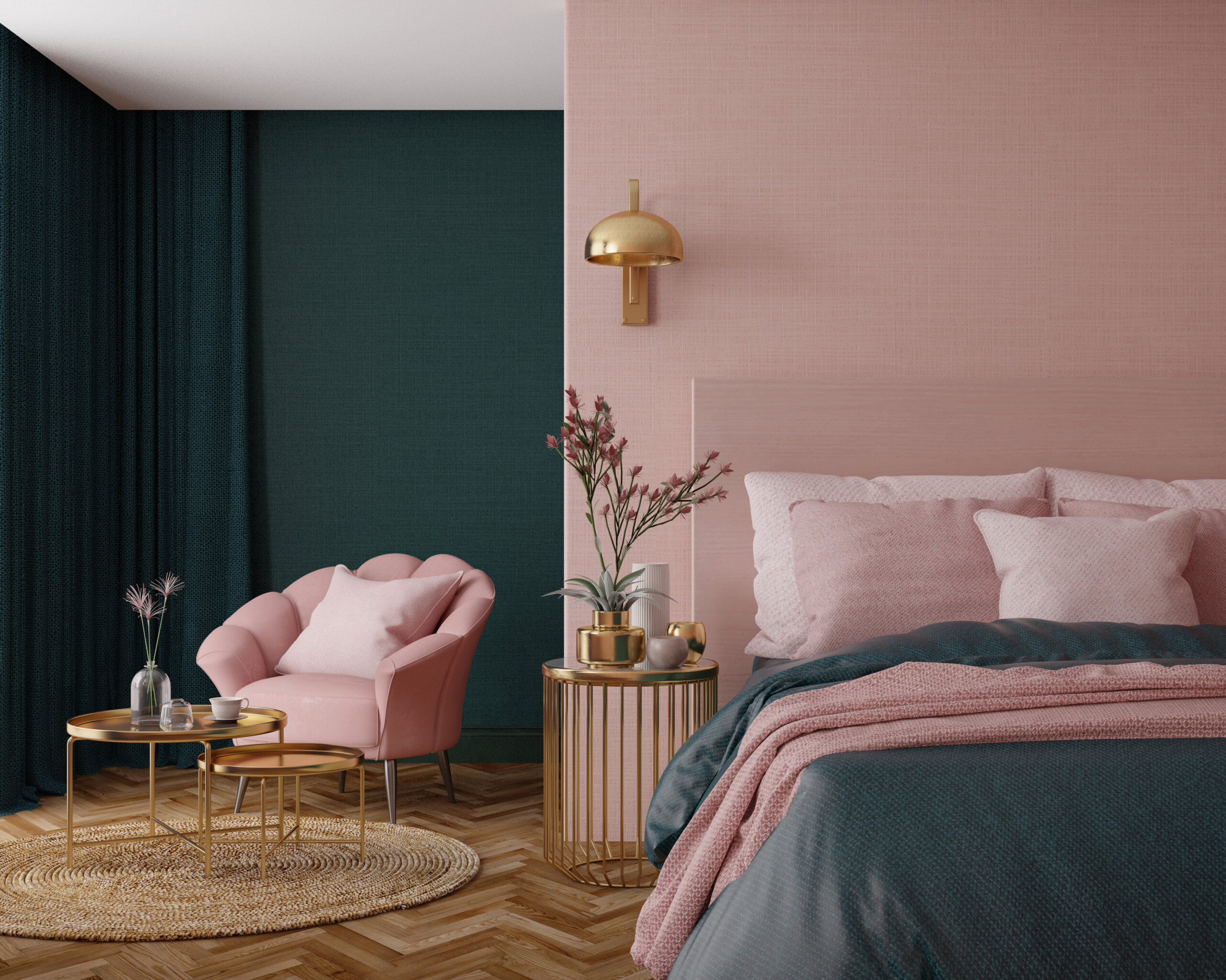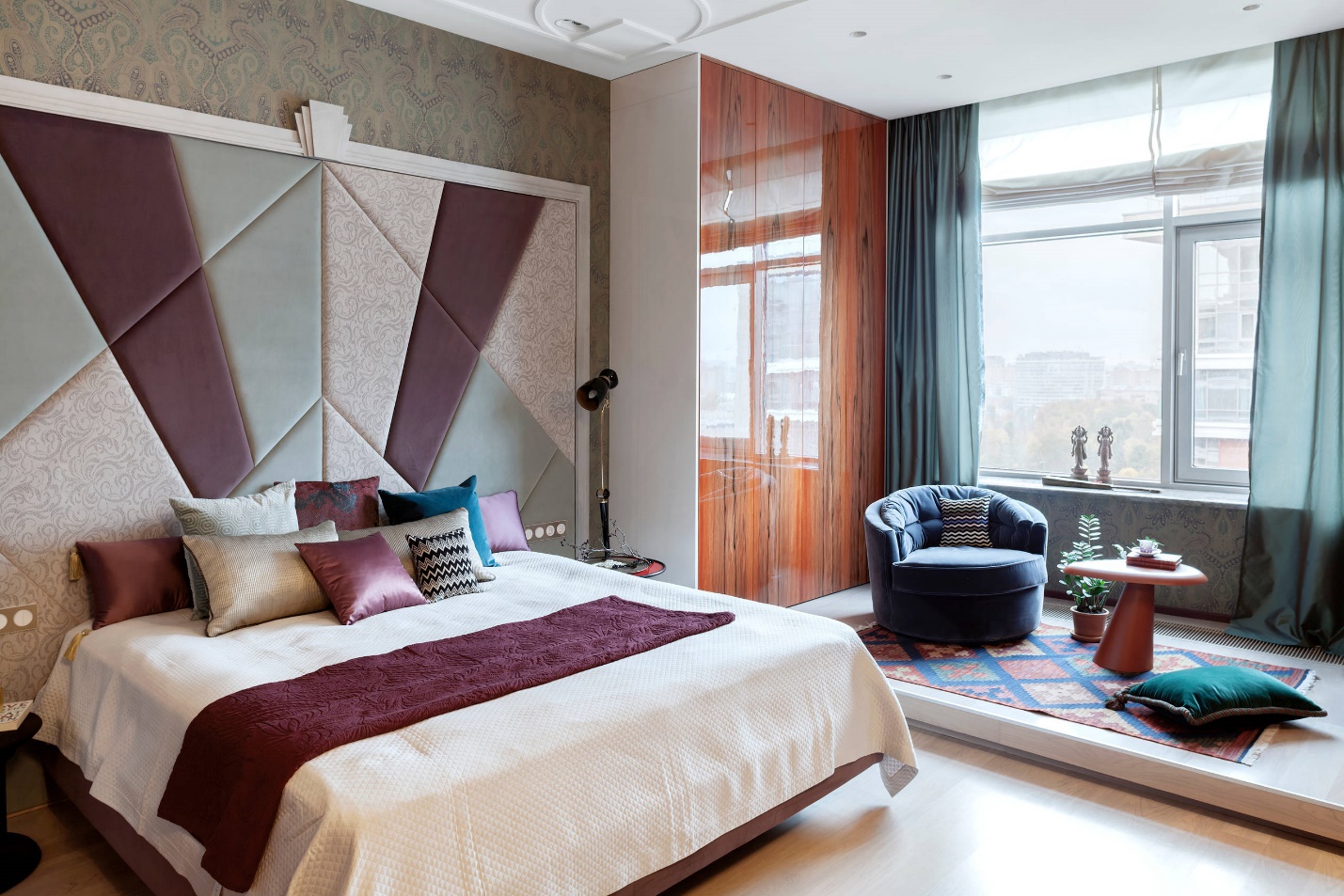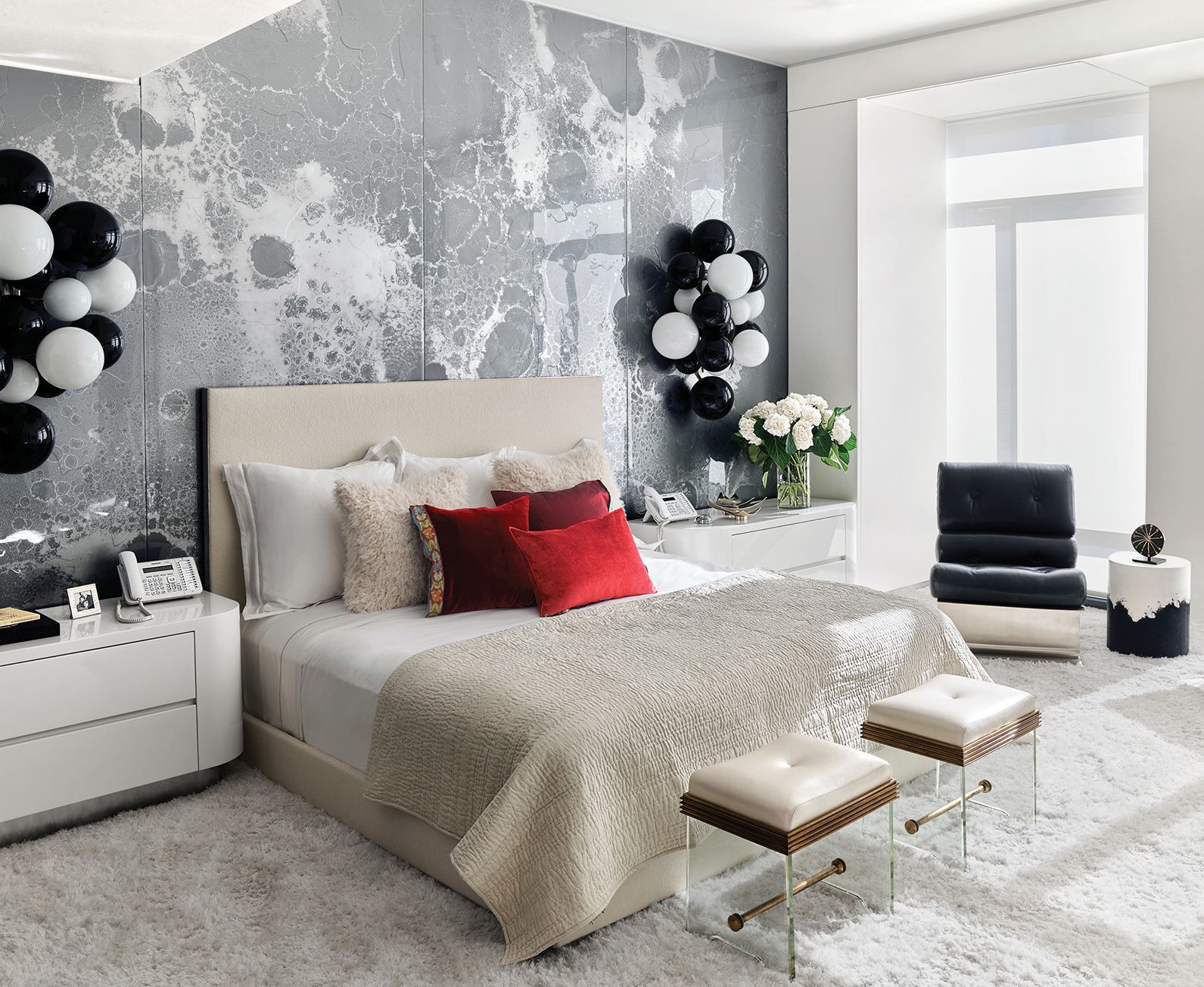Defining Art Deco Style: Art Deco Style Bedroom

Art Deco, a design movement that flourished in the 1920s and 1930s, left an indelible mark on architecture, interior design, fashion, and the arts. It emerged as a reaction against the ornate and overblown styles of the late 19th century, embracing a more modern and geometric aesthetic.
Historical Context and Origins
Art Deco’s origins can be traced back to the 1925 Paris Exposition Internationale des Arts Décoratifs et Industriels Modernes, which showcased the latest trends in decorative arts. The exhibition was a pivotal moment in the movement’s development, solidifying its name and influence. However, its roots lie in earlier artistic movements like Cubism, Art Nouveau, and the Ballets Russes, which emphasized geometric forms, bold colors, and a sense of dynamism.
Key Characteristics of Art Deco Style
Art Deco is characterized by its distinctive blend of geometric patterns, bold colors, luxurious materials, and streamlined forms.
- Geometric Patterns: Art Deco designers favored geometric patterns, such as zigzags, chevrons, sunbursts, and stylized flora and fauna. These patterns were often used in repeating motifs on walls, furniture, and decorative objects, creating a sense of rhythm and visual interest.
- Bold Colors: Art Deco embraced a vibrant color palette, often using rich, saturated hues like gold, silver, black, red, and blue. These colors were used in combination to create striking contrasts and a sense of opulence.
- Luxurious Materials: Art Deco designers often used expensive materials, such as exotic woods, ivory, silver, and gemstones, to create a sense of luxury and refinement. These materials were carefully crafted and polished, showcasing the high level of craftsmanship that was characteristic of the movement.
- Streamlined Forms: Art Deco designs often featured streamlined forms, inspired by the sleek lines of automobiles, airplanes, and ocean liners. This emphasis on functionality and efficiency was a reflection of the modern age and its embrace of technological advancements.
Famous Art Deco Buildings and Objects
Art Deco’s influence can be seen in countless buildings and objects around the world.
- The Chrysler Building (New York City): This iconic skyscraper, completed in 1930, is a prime example of Art Deco architecture. Its distinctive spire, inspired by the hood ornament of a Chrysler automobile, is a symbol of the era’s embrace of technology and modernity.
- The Empire State Building (New York City): Although often associated with the Art Deco style, the Empire State Building actually incorporates elements of both Art Deco and Streamline Moderne, a later development of Art Deco. Its sleek lines and geometric forms are characteristic of the era.
- The Radio City Music Hall (New York City): This opulent theater, built in 1932, is a masterpiece of Art Deco design. Its lavish interiors feature intricate geometric patterns, luxurious materials, and a grand sense of scale.
- The Hoover Dam (Nevada): This massive dam, completed in 1936, is a testament to the engineering prowess of the Art Deco era. Its streamlined forms and geometric patterns are a reflection of the era’s fascination with technology and functionality.
- The Tiffany Lamps: These iconic lamps, designed by Louis Comfort Tiffany, are known for their stained-glass designs and intricate geometric patterns. They are considered to be a prime example of Art Deco’s influence on decorative arts.
Creating an Art Deco Bedroom

Transforming your bedroom into an Art Deco haven requires a careful blend of design elements, furniture choices, and a touch of glamorous flair. This style, known for its geometric patterns, rich materials, and luxurious finishes, offers a unique opportunity to create a space that exudes sophistication and timeless elegance.
Bedroom Layout and Furniture Placement, Art deco style bedroom
The layout of an Art Deco bedroom should prioritize functionality and flow. Here are some key considerations:
- The bed, the focal point of the room, should be placed against a prominent wall, preferably with a headboard that reflects the Art Deco aesthetic. A grand canopy bed with intricate details or a streamlined platform bed with geometric patterns would be ideal choices.
- Nightstands should flank the bed, offering surfaces for lamps, books, and other essentials. Consider using mirrored or lacquered nightstands for a touch of glamour.
- A dressing table, positioned strategically, can enhance the room’s functionality and elegance. Choose a dressing table with a mirrored surface and intricate details that complement the overall theme.
- A chaise lounge or a comfortable armchair, placed near a window or a reading nook, provides a space for relaxation and contemplation. Opt for a chaise lounge with curved lines or an armchair with geometric upholstery.
- Storage solutions are essential for maintaining order and creating a visually appealing space. Consider using armoires with mirrored doors or geometric patterned chests to enhance the Art Deco theme.
Art Deco Mood Board
Creating a mood board is an excellent way to visualize the desired aesthetic and gather inspiration. Here’s a breakdown of key elements:
Color Palette
The Art Deco palette often features bold, contrasting colors.
- Black and white create a striking and timeless backdrop.
- Metallic accents, such as gold, silver, and copper, add a touch of luxury and sophistication.
- Rich jewel tones, like emerald green, sapphire blue, and ruby red, inject vibrancy and depth.
- Neutral tones, such as beige, ivory, and cream, provide a calming and elegant base for bolder colors and patterns.
Patterns
Art Deco patterns are characterized by their geometric shapes, symmetry, and bold lines.
- Sunburst patterns, with their radiating lines, create a dynamic and eye-catching effect.
- Chevron patterns, with their zigzag lines, add a touch of movement and visual interest.
- Geometric shapes, such as squares, circles, and triangles, create a sense of order and sophistication.
- Abstract patterns, inspired by nature or architecture, can add a touch of whimsy and artistry.
Textures
Art Deco textures are often luxurious and tactile.
- Velvet, with its soft, plush texture, adds a touch of opulence and comfort.
- Leather, with its durability and rich patina, exudes sophistication and timeless appeal.
- Silk, with its smooth, lustrous texture, adds a touch of elegance and refinement.
- Wood, with its natural grain and warm tones, provides a grounding element and complements the metallic accents.
Lighting
Lighting plays a crucial role in enhancing the Art Deco ambiance.
- Chandeliers, with their cascading crystals or geometric shapes, create a dramatic and luxurious focal point.
- Sconces, with their elegant designs and warm glow, add a touch of sophistication and ambiance.
- Table lamps, with geometric bases and silk shades, provide task lighting and enhance the overall aesthetic.
- Floor lamps, with tall, slender silhouettes, add a touch of drama and elegance to the space.
Art Deco Furniture and Decor

Art Deco furniture and decor are integral to creating the signature look of this iconic style. They showcase a distinct blend of geometric patterns, luxurious materials, and functional design, reflecting the era’s fascination with modernity and progress.
Iconic Art Deco Furniture Pieces
Art Deco furniture pieces are easily recognizable by their bold geometric forms, sleek lines, and luxurious materials.
- Beds: Art Deco beds often feature a tall headboard with geometric patterns or inlays. The headboard might be made of exotic woods like mahogany or ebony, or covered in luxurious fabrics like velvet or silk.
- Dressers: Art Deco dressers typically have a simple, rectangular form with clean lines and geometric details. They often feature mirrored doors, chrome accents, and geometric handles.
- Nightstands: Art Deco nightstands are often small and compact, with a single drawer or shelf. They may feature chrome accents, geometric inlays, or be made of exotic woods.
- Chairs: Art Deco chairs are characterized by their comfortable yet stylish designs. They often feature curved backs, geometric upholstery patterns, and chrome or wood legs. Popular styles include the club chair, the armchair, and the chaise lounge.
Materials Used in Art Deco Furniture
Art Deco furniture utilized a wide range of materials, showcasing the era’s fascination with modern materials and craftsmanship.
- Lacquer: Lacquer was a popular material for furniture surfaces, providing a smooth, glossy finish that reflected light and added a sense of luxury. Lacquer was often used in conjunction with geometric patterns and inlays.
- Chrome: Chrome was another popular material, adding a sleek, modern touch to furniture pieces. Chrome was often used for accents like handles, legs, and frames.
- Glass: Glass was also frequently used in Art Deco furniture, often for tabletops, doors, and decorative elements. Glass could be clear, frosted, or colored, adding a sense of elegance and sophistication.
- Exotic Woods: Exotic woods, such as mahogany, ebony, and rosewood, were prized for their beauty and durability. They were often used for furniture frames, inlays, and decorative elements.
Decorative Elements
Art Deco decor is known for its bold geometric patterns, rich colors, and luxurious materials.
- Mirrors: Art Deco mirrors often featured geometric frames, often made of chrome, wood, or glass. They could be round, rectangular, or even have a stepped design.
- Vases: Art Deco vases were often tall and slender, with geometric shapes and patterns. They were made of materials like glass, ceramic, or metal, and often featured bold colors.
- Sculptures: Art Deco sculptures were often abstract and geometric, reflecting the era’s fascination with modern art. They were made of materials like bronze, marble, or wood.
- Artwork: Art Deco artwork often featured geometric patterns, bold colors, and stylized figures. Popular themes included modern life, nature, and abstract designs.
Art deco style bedroom – Art Deco bedrooms are all about bold geometric shapes and luxurious textures. You can bring in that vibrant energy with a splash of lime green! Check out some lime green bedroom pictures for inspiration. Think about incorporating a geometric patterned rug or a statement headboard in a rich, emerald hue to complete the look.
An art deco bedroom screams glamour, right? Think geometric patterns, sleek lines, and maybe even a touch of gold. If you want to keep things a little more serene, a gray cashmere benjamin moore bedroom can be a perfect backdrop.
Imagine that rich, sophisticated gray as the canvas for your deco dreams, adding a touch of warmth and calm to the overall vibe.
